Today’s Current Affairs: 21st Apr 2023 for UPSC IAS exams, State PSC exams, SSC CGL, State SSC, RRB, Railways, Banking Exam & IBPS, etc
Table of Contents
Helopeltis Theivora : Tea Mosquito Bug
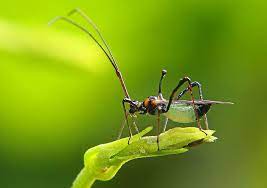
The tea mosquito bug (Helopeltis Theivora) is spreading rapidly and affecting tea production in both low and high-elevation plantations in Southern India
- It is a major sucking pest of tea (Camellia sinensis L.) in most tea-producing countries.
- The nymphs and adults of the TMB suck the sap from tender leaves, buds and young shoots, which results in heavy crop losses.
- It can be controlled by using synthetic pesticides.
- However, the 2014 Plant Protection Code (PPC) from the Tea Board of India restricts the use of harmful pesticides to keep the tea safe and free from harmful pesticides
Civil Union And Concept Of Marriage:
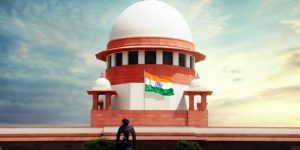
The Supreme Court clarified that the hearing’s scope would be limited to developing a notion of a “civil union” that finds legal recognition under the Special Marriage Act.
- A civil union (also known as a civil partnership) is a legally recognized arrangement similar to marriage, created primarily as a means to provide recognition in law for same-sex couples.
- Civil unions would be accompanied by rights such as inheritance rights, property rights, parental rights, employment benefits to spouses, joint parenting right to abstain from testifying against one’s partner — similar to the spousal privilege given under Section 122 of the Indian Evidence Act.
- A civil union is a legal agreement between two individuals that provides them with some of the rights and benefits of a marriage, such as inheritance rights, tax benefits, and access to healthcare.
- Civil unions were recognized solely by issuing states and not by federal law, whereas marriages were recognized both at the state and federal levels.
- Couples in civil unions were not able to enjoy the benefits of being in a civil union uniformly across all states, due to variations in state laws.
- Civil unions provided spousal privileges similar to those given under Section 122 of the Indian Evidence Act, whereas marriages automatically provided this privilege.
- In the wake of the legalisation of same-sex marriages, several civil unions were converted into marriages.
- A civil union is the legal status that provides same-sex couples specific rights and responsibilities normally conferred upon married couples.
- This means that same-sex couples who are in a civil union have access to legal protections and benefits that were previously unavailable to them.
- These rights are often similar to those conferred upon married couples, such as inheritance rights, employment benefits to spouses, joint parenting or joint ownership rights, and the right to abstain from testifying against one’s partner.
Saurashtra Tamil Sangamam:
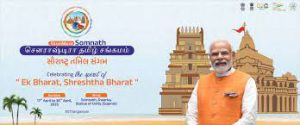
Nearly 3,000 people are expected to attend Saurashtra Tamil Sangamam. The festival aims to showcase “age-old ties” and cultural links between two coastal States of Gujarat and Tamil Nadu.
- The Saurashtra Tamil Sangamam, is similar to the Kashi Tamil Sangamam.
- The festival aims to highlight the cultural diversity and strength of India and to reconnect people with pilgrimage destinations and cultural heritage.
- This event will take place at multiple locations in Gujarat such as Somnath, Dwarka and the Statue of Unity at Kevadia.
- Saurashtra Tamil Sangamam : Centuries ago, invasions between 600 and 1000 years ago forced numerous individuals to migrate from Saurashtra in Gujarat and establish new settlements in Tamil Nadu’s districts around Madurai, now known as Tamil Saurashtrian.
- People of Gujarati origin have settled in various places in TamilNadu, such as Tiruchi, Thanjavur, Kumbakonam, and Salem, creating cultural connections between Gujarat and Tamil Nadu.
National Quantum Mission:

The Union Cabinet recently approved the ₹6,003 crore National Quantum Mission (NQM).
- National Quantum Mission (NQM) will fund research and development of quantum computing technology and associated applications.
- The mission will have defined milestones that are expected to be achieved over the course of eight years (2023-24 to 2030-31).
- India is the sixth country to have a dedicated quantum mission after the US, Austria, Finland, France and China.
- Four thematic hubs, or T-Hubs, with a focus on quantum computing, communication, sensing and metrology, and materials and devices will be established in India’s leading academic and national R&D institutes.
- Objectives:
- Create intermediate-scale quantum computers with 50-1000 qubits in the next eight years.
- Establish satellite-based secure quantum communications between ground stations within India, as well as with other countries, covering a range of 2000 km.
- It will look to provide inter-city quantum key distribution over 2000 km.
- Multi-node quantum network with quantum memories.
- Help to advance atomic technology with highly sensitive magnetometers and precision atomic clocks that serve communication, navigation, and timing.
- Aid in designing and synthesising quantum materials, including superconductors, novel semiconductor structures, and topological materials for the fabrication of quantum devices.
Quantum Computing:
- It is an area of computer science focused on the development of technologies based on the principles of quantum theory.
- It uses the unique behaviours of quantum physics to solve problems that are too complex for classical computing.
Heatwaves:

Casualties were observed from an apparent heat stroke while attending a government award function in Navi Mumbai.
- This incident highlights the potential risks from heatwaves, which are expected to increase in intensity and frequency due to climate change.
- Several factors, such as long-distance travel, underlying health conditions, and lack of access to drinking water and medical attention in large gatherings, can increase vulnerability to heat strokes.
- Heatwaves are prolonged periods of excessively hot weather that can cause adverse impacts on human health, the environment, and the economy.
- India, being a tropical country, is particularly vulnerable to heatwaves, which have become more frequent and intense in recent years.
24th Russia-India Inter-Governmental Commission (IGC) Meeting In India:
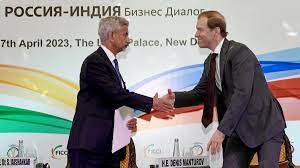
Russia’s Deputy Prime Minister has attended the 24th Russia-India Inter-Governmental Commission (IGC) meeting in India.
- Russia has expressed its interest in importing manufacturing equipment, including machinery, from India to replace those of Western origin.
Highlights of the Meeting:
- Both countries reviewed the defense cooperation between India and Russia, which has been facing challenges related to deliveries and payments due to the ongoing war in Ukraine.
- The two countries discussed the plans that India has for Russia’s far eastern region, which is an essential part of Russia’s strategy in the Indo-Pacific region.
- They held discussions on bilateral trade efforts and the identification of new industrial points that would provide additional impetus for trade between the two countries.
- Balance of trade currently tilts in favor of Russia, and hence, the two sides discussed ways to bring more balance in trade relations.
- Both sides also discussed a wide range of issues related to bilateral trade, economic, and humanitarian cooperation.
- These discussions covered many areas of mutual interest, including those related to technology, energy, healthcare, and education.
State Of World Population Report 2023:
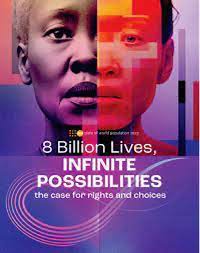
According to the recently released United Nations Population Fund’s (UNFPA) State of World Population report India will overtake China as the world’s most populous country this year.
Highlights of the Report:
- India’s total fertility rate, or births per woman, was estimated at 2, lower than the world average of 2.3.
- The average life expectancy for an Indian male was projected at 71 and 74 for females.
- The report also brought up worrying statistics regarding gender rights in India.
- The adolescent birth rate per 1,000 girls aged 15–19 was 11, while 23 per cent of girls were married off before the age of 18.
United Nations Population Fund’s (UNFPA):
- It is an international development agency created in 1968 to support the execution of projects and programmes in the area of population and sexual and reproductive health.
- Its mission is to deliver a world where every pregnancy is wanted, every childbirth is safe and every young person’s potential is fulfilled.
- In 1987, it was officially renamed as the United Nations Population Fund but the original abbreviation UNFPA (United Nations Fund for Population Activities) was retained.
- Headquarters: New York
Mission 50K-EV4ECO:

Small Industries Development Bank of India (SIDBI) recently announced a new scheme Mission 50K-EV4ECO to boost the electric vehicle (EV) ecosystem in the country.
- Under this mission, SIDBI will directly provide loans to eligible small and medium enterprises (SMEs) for the purchase of EVs and developing charging infrastructure, including battery swapping.
- It focuses on increasing the uptake of electric two-wheelers, three-wheelers and four-wheelers through direct and indirect lending support to vehicle aggregators, fleet operators and leasing companies.
- SIDBI was established under an Act of Parliament in 1990.
- It is the Principal Financial Institution engaged in the promotion, financing & development of the Micro, Small and Medium Enterprises (MSMEs) sector and coordination of the functions of the various institutions engaged in similar activities.
- Electric Vehicles is defined as a vehicle that can be powered by an electric motor that draws electricity from a battery and is capable of being charged from an external source.
Cinematograph (Amendment) Bill 2023:

The Union Cabinet recently approved the Cinematograph (Amendment) Bill 2023, which has provisions to curb the transmission of pirated film content on the Internet.
- The Cinematograph (Amendment) Bill 2019 was introduced in the Rajya Sabha on 12th February
- It was referred to the Standing Committee on Information Technology which presented its report on 16th March 2020.
- The Cinematograph (Amendment) Bill, 2023, was prepared after seeking public comments, followed by several rounds of stakeholder consultations.
- It will be introduced in the Parliament during the upcoming monsoon session.
Cinematograph (Amendment) Bill 2023:
- It seeks to amend the Cinematograph Act 1952.
- It has provisions for harsher punishment for film piracy and the introduction of new-age categories for classifying films.
- It has provisions to classify films on the basis of age group instead of the current practice of rating them “U” (unrestricted public exhibition), “A” (restricted to adult audiences), and “UA” (unrestricted public exhibition subject to parental guidance for children below the age of 12).
- The amendments seek to add new classifications – ‘UA-7+’, ‘UA-13+’, and ‘UA-16+’ in place for 12 years.
- It also seeks to bring about uniformity in categorisation of films and content across platforms.
- The Bill holds stricter punishment for those responsible for piracy. This includes three years of imprisonment and a Rs 10 lakh penalty for those engaged in piracy.
- Once the Bill is released, the act of piracy will be considered an offence legally and will include even transmitting pirated content punishable.
Exobiology Extant Life Surveyor: NASA

NASA, is developing a snake-like robot known as Exobiology Extant Life Surveyor (EELS) which it says can boost space exploration through its diverse adaptability to various terrains.
- Exobiology Extant Life Surveyor (EELS) is a mobile instrument platform conceived to explore internal terrain structures, assess habitability and ultimately search for evidence of life.
- It is designed to be adaptable to traverse ocean-world-inspired terrain, fluidized media, enclosed labyrinthian environments and liquids.
- It is a snake-like robot that that can move through rough terrain.
- Its purpose is to examine the surface of Saturn’s moon and determine whether life is present.
- EELS allows for deeper exploration into areas that were once unattainable.
- It is made of multiple, identical, segments containing both the actuation and propulsion mechanisms as well as the power and communication electronics to drive them.
- EELS uses first-of-a-kind rotating propulsion units that act as tracks, gripping mechanisms and propeller units underwater, enabling the robot to access a plume vent exit and follow it to its ocean source.
National Technical Research Organisation:
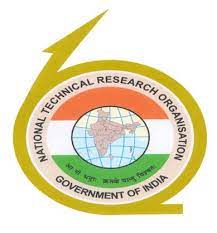
The Central Government recently appointed former Special Protection Group (SPG) chief as the Chairman of the National Technical Research Organisation (NTRO).
- National Technical Research Organisation (NTRO) is a technical intelligence Agency under the National Security Advisor in the Prime Minister’s Office, India.
- It was formed in 2004 to strengthen the country’s national security apparatus.
- It is under the direct control of the Prime Minister’s Office and operates as an autonomous organization.
- Objective is to gather technical intelligence, which involves intercepting and analyzing communications signals, imagery intelligence, and cyber intelligence.
- It also provides technical assistance to other intelligence agencies in the country, including the Intelligence Bureau and Research and Analysis Wing.
- It is responsible for maintaining a database of information related to technology and developing advanced tools and techniques for intelligence gathering.
- It also conducts research and development activities in the field of technical intelligence.
- NTRO is headed by a Chairman who reports directly to the Prime Minister of India.
- Its headquarters is located in New Delhi, and it has operational centres in various parts of the country.
Special Protection Group (SPG):
- It is entrusted with the task of providing proximate security to the Prime Minister of India, the former Prime Minister and their immediate family members.
- It was formed in 1985 after the assassination of Prime Minister Indira Gandhi as an executive body on the recommendation of the Birbal Nath committee.
- Later on, it became a statutory body under Special Protection Group Act 1988.




